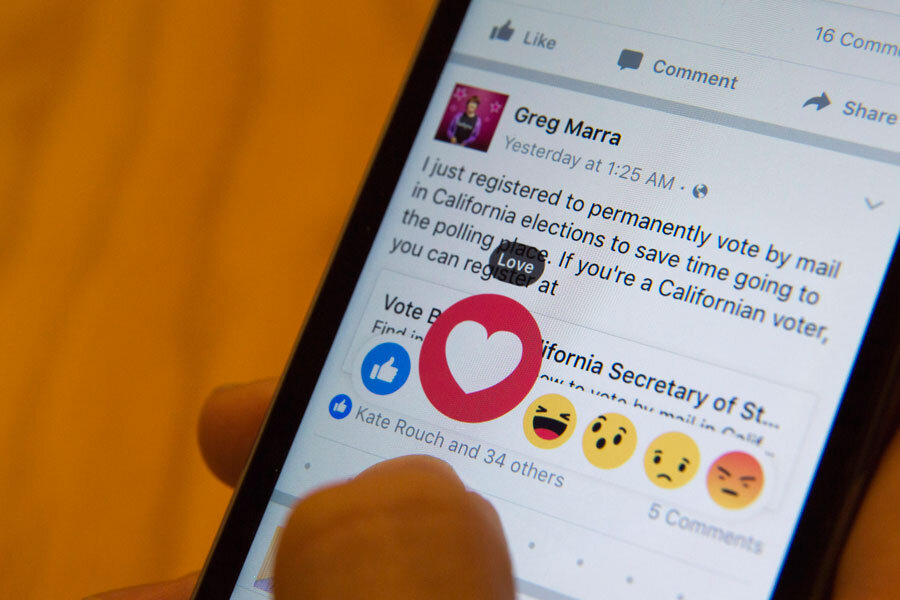How Facebook narrowed range of human emotions down to six reactions
Loading...
Facebook is rolling out it's new "Reactions" on Wednesday, a new take on social media's traditional "Like" button.
For the past seven years, Facebook’s thumbs-up "Like" button has been the only single-click way for users to respond to a post, comment, photo, or article. But when a friend shares a sad or angry post, it usually feels awkward sending a Like their way. The site’s one billion daily active users have long requested a "Dislike" button, but Facebook has continually dodged this initiative finding it too negative.
Instead of the old "Like" system, Reactions will offer users six possible responses: Like, Love, Haha, Wow, Sad, or Angry.
“We’ve been listening to people and know that there should be more ways to easily and quickly express how something you see in News Feed makes you feel,” Facebook product manager, Sammi Krug, said in a press release Wednesday. “That’s why today we are launching Reactions, an extension of the "Like" button, to give you more ways to share your reaction to a post in a quick and easy way.”
And Reactions has been a long time coming.
“Like all good design, the process of getting to a simple solution is complex,” Geoff Teehan, one of Facebook's product design directors wrote in an article for Medium.
“We understand that this is a big change, and want to be thoughtful about rolling this out,” added Mr. Krug in Facebook’s announcement. “For more than a year we have been conducting global research including focus groups and surveys to determine what types of reactions people would want to use most.”
Why so long?
Facebook wanted to get it right, says Julie Zhuo, another of Facebook's product design directors. Not only did the company want to pair down emotions to what users felt were the six most essential, but the company also wanted to create a functional yet visually pleasing display for the additions.
Before testing out Reactions in a few select countries, Facebook narrowed down the number of emotions by researching the site’s top stickers and comments.
“For more than a year, we have been conducting international research to explore what types of reactions people might find appealing,” writes Mr. Teehan. ‘Yay’ and ‘Confused’ were originally in Facebook’s eight Reactions, but they both got the boot because they were rarely used in testing. Analyzing samples and conducting international surveys “gave us some of the specific language that people use to express themselves,” adds Teehan.
Reactions has been live in Ireland, Spain, and Japan since October. In these early prototypes, Facebook users continued to use "Like" the most, but began to use the new alternatives more frequently over time, Ms. Zhuo told the Associated Press.
And then once the reactions and corresponding emojis were decided on, there was the functionality test.
“For instance, a menu might have been harder to find, while offering all six buttons up front might have made it harder to just quickly ‘like’ a post and move on,” explains AP.
And Facebook wanted "Like" to remain the focus. Only after hovering over or holding down the "Like" button for a few seconds will the new options appear. To avoid looking cluttered, the News Feed will only show the top three reactions, but both post creators and post viewers can see a full breakdown of all emotional reactions with a click or tap.
“This design is smart because if you don’t want to use Reactions, you don’t have to, and there aren’t six buttons on every post,” explains Tech Crunch’s Josh Constine.
Users’ news feeds are already curated based off of past "likes." Eventually, Facebook says it will use all six reactions to formulate news feeds’ algorithms.








